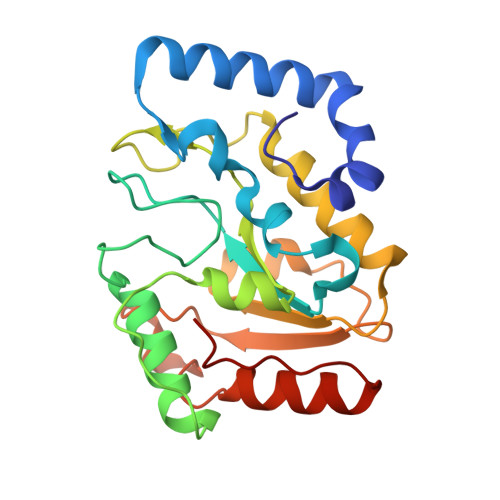Optimisation of the surface electrostatics as a strategy for cold adaptation of uracil-DNA N-glycosylase (UNG) from Atlantic cod (Gadus morhua)
Moe, E., Leiros, I., Riise, E.K., Olufsen, M., Lanes, O., Smalas, A.O., Willassen, N.P.(2004) J Mol Biology 343: 1221-1230
- PubMed: 15491608
- DOI: https://doi.org/10.1016/j.jmb.2004.09.004
- Primary Citation of Related Structures:
1YUO - PubMed Abstract:
Cold-adapted enzymes are characterised by an increased catalytic efficiency and reduced temperature stability compared to their mesophilic counterparts. Lately, it has been suggested that an optimisation of the electrostatic surface potential is a strategy for cold adaptation for some enzymes. A visualisation of the electrostatic surface potential of cold-adapted uracil-DNA N-glycosylase (cUNG) from Atlantic cod indicates a more positively charged surface near the active site compared to human UNG (hUNG). In order to investigate the importance of the altered surface potential for the cold-adapted features of cod UNG, six mutants have been characterised and compared to cUNG and hUNG. The cUNG quadruple mutant (V171E, K185V, H250Q and H275Y) and four corresponding single mutants all comprise substitutions of residues present in the human enzyme. A human UNG mutant, E171V, comprises the equivalent residue found in cod UNG. In addition, crystal structures of the single mutants V171E and E171V have been determined. Results from the study show that a more negative electrostatic surface potential reduces the activity and increases the stability of cod UNG, and suggest an optimisation of the surface potential as a strategy for cold-adaptation of this enzyme. Val171 in cod UNG is especially important in this respect.
Organizational Affiliation:
Department of Molecular Biotechnology, Institute of Medical Biology, Faculty of Medicine, University of Tromsø, N-9037 Tromsø, Norway.


















